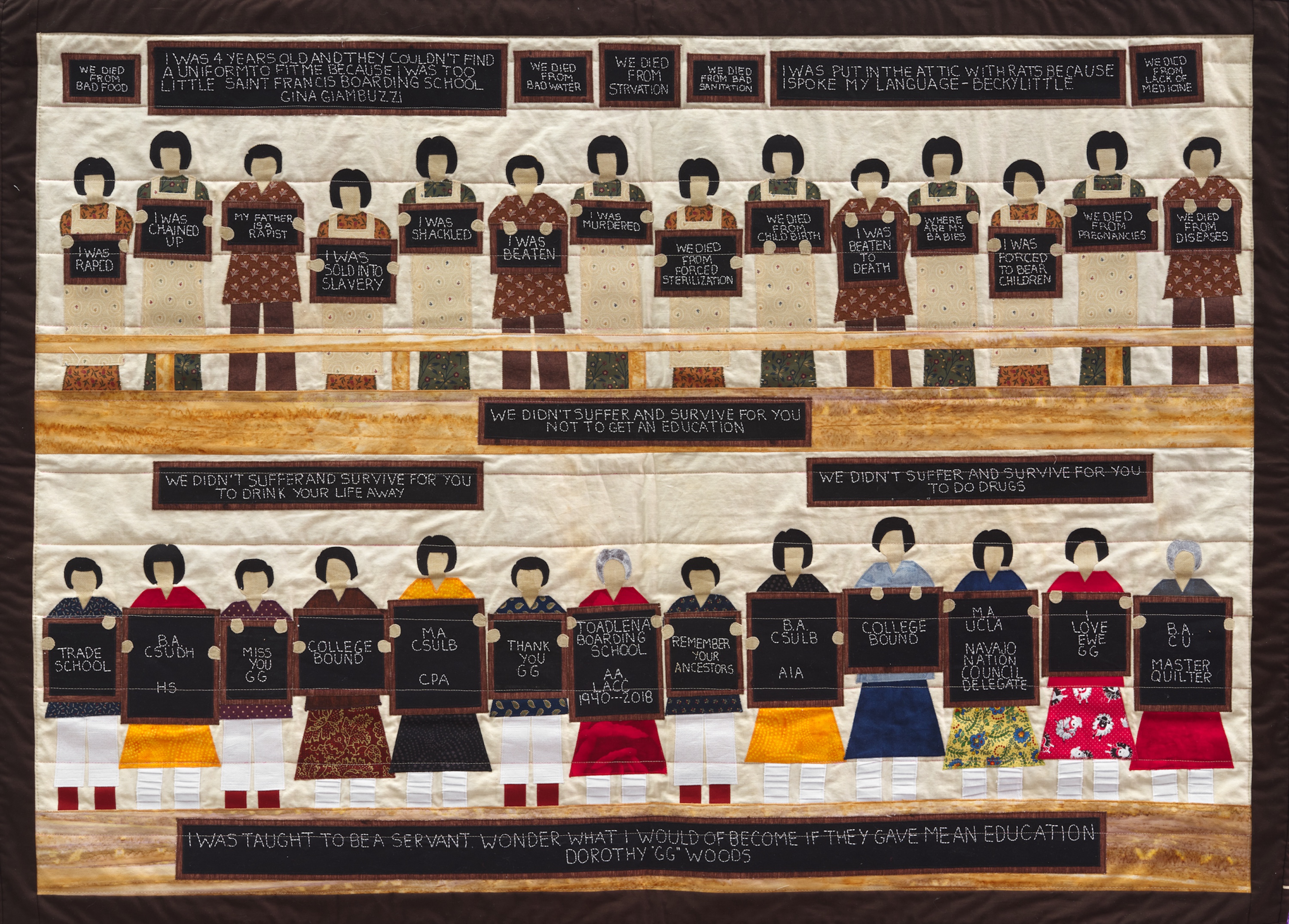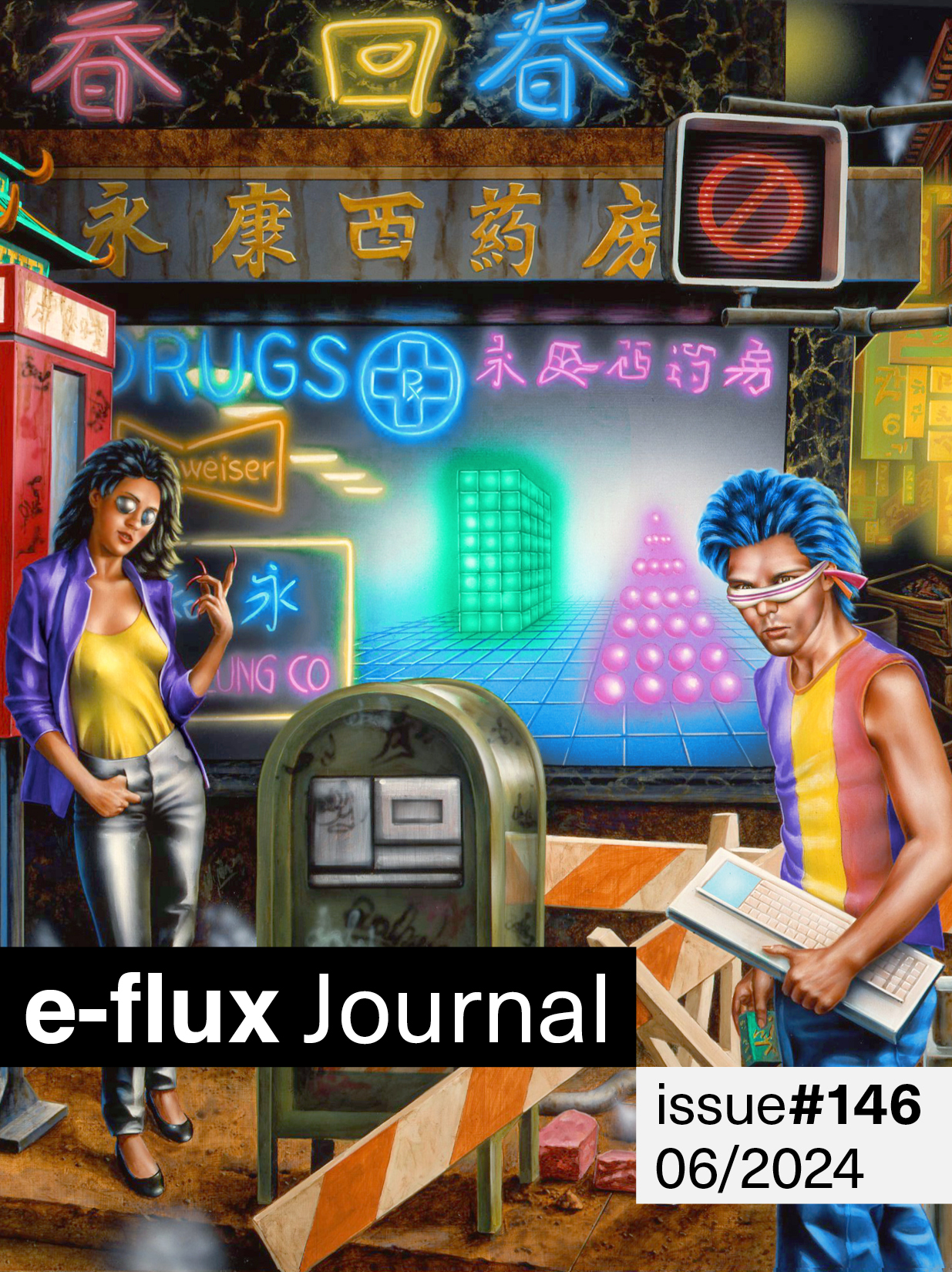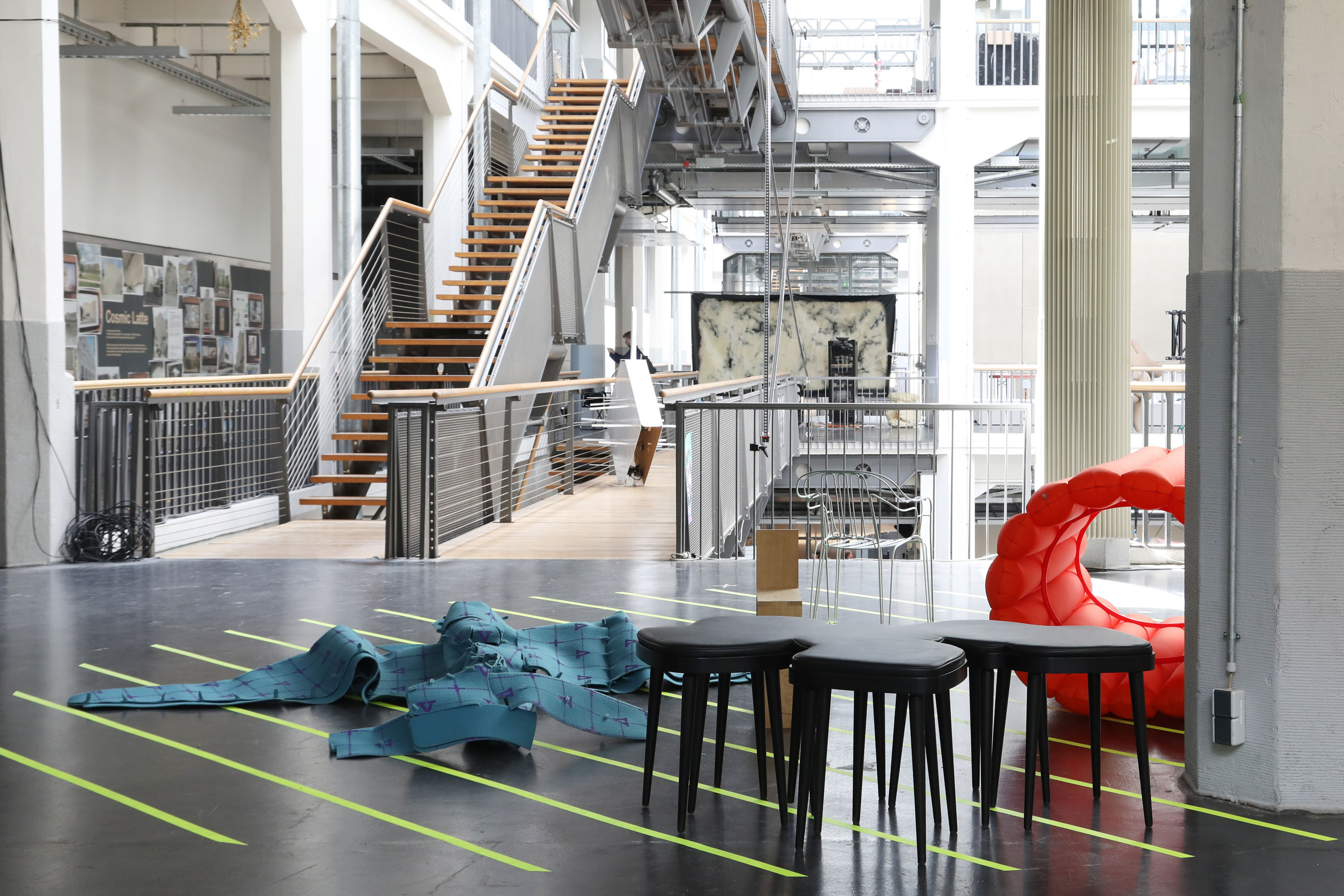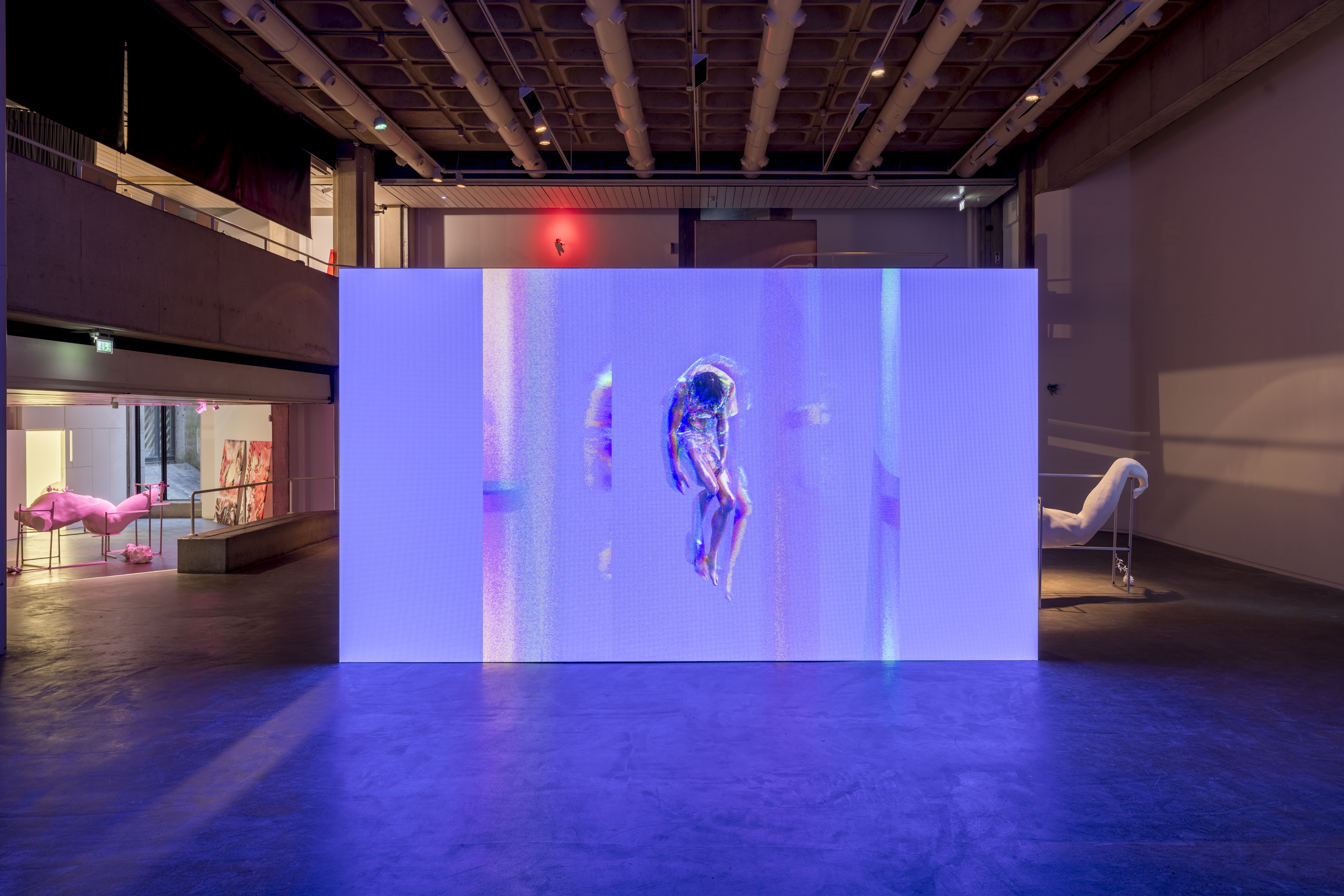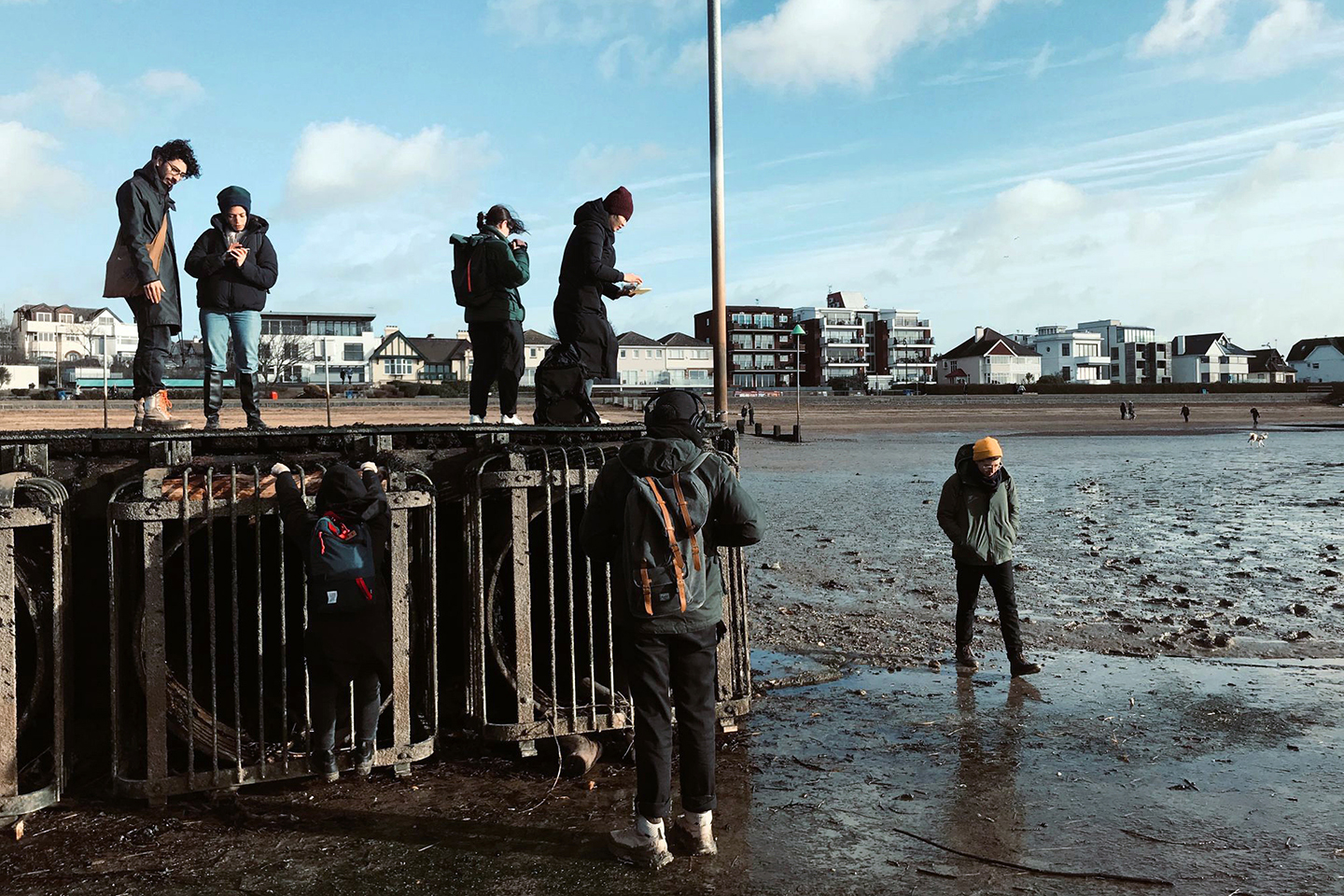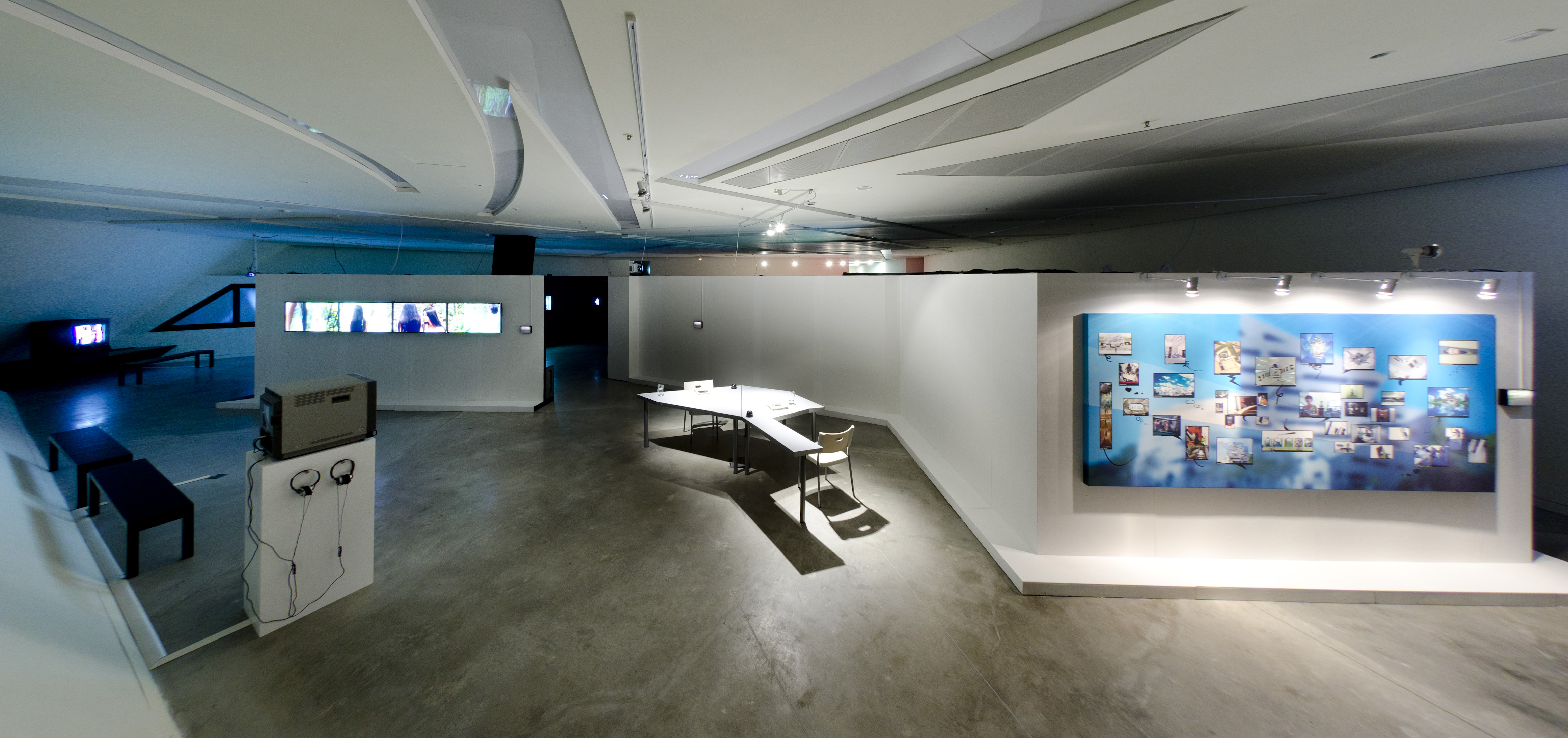Digital technologies promised to revolutionize higher education. Massive Open Online Courses (MOOCs) embodied this euphoria, and were promoted aggressively by platforms like Udacity and Coursera in the early 2010s. MOOCs offered universities the prospect of extreme efficiency, a value proposition in which the most can be extracted from the least. Representing an unprecedented centralization of education, rather than democratization, thousands of students could learn computer science or US history from a few disembodied Harvard-branded instructors. While MOOCs themselves have not consumed universities, online education remains an important aspect of our flexible (and precarious) postrecession version of academia. As learning has moved online, art schools have found novel ways of grafting their material- and practice-based curricula onto digital education platforms. Through email, Skype, and self-directed studio work, MFAs can be earned from a distance, an unsurprising union considering art and the internet’s shared fervor for images, as well as the need for universities to generate new revenue streams. While MOOCs and low-residency MFAs represent models of education optimized to accord with the logic of capitalism, the New Centre for Research & Practice has emerged as an online pedagogical platform for art and philosophy developed in antagonism to the twenty-first-century corporatization of academia.
In 2012, as MOOCs started to make splashy headlines, New Centre cofounders Jason Adams and Mohammad Salemy connected, appropriately enough, over Facebook, united by a mutual desire to patch together existing platforms like Google Hangouts to create a networked educational experience. (Tony Yanick, a third cofounder, left the New Centre in 2016 to pursue a PhD.) At the time, there was “nothing with the rigor of academia online,” Salemy explained to me from Berlin over Facebook video chat. Adams, Salemy, and Yanick would build a new institution, a “para-academic” one with a sustained, challenging relationship between instructors and students. Their resolve for the project only strengthened after the 2014 “Incredible Machines” conference at Vancouver’s Simon Fraser University that used interactive telepresence to assemble scholars and thinkers from around the world to address technologically focused topics. “We could see that the digital platforms and social media we utilized could be combined for a mode of online graduate-level education,” Adams and Salemy wrote to me in a Google doc. Academia could be invigorated with twenty-first-century speed. As Adams, Salemy, and Yanick pinpoint their theoretical nexus in Politics of Study:
The contemporary technological period we are living through is, for instance, marked by an immediatism, in which everything arrives instantaneously, which for many creates significant confusion cantered around the fetishization of the “now.” Our approach is to embrace this immediacy, by employing technologies such as Google Hangouts and Google Classroom that do, in fact, operate according to instantaneous temporality, but without also accepting the cancellation of the future that is implied by how immediatism functions technoculturally—making us only aware of the present without being able to imagine or plan for the future.[footnote The New Centre for Research and Practice, “Beyond the MOOC,” in Politics of Study, eds. Sidsel Meineche Hansen and Tom Vandeputte (London: Open Editions/Funen Art Academy, 2015), 119.]
Now entering its fourth academic year, the New Centre is, in legal terms, a licensed proprietary school registered in Michigan (where Adams taught at Kendall College of Art and Design) that grants students twelve-credit certificates through a variety of seminars in four programs: Critical Philosophy, Art and Curatorial Practice, Social and Political Thought, and Transdisciplinary Research and Practice. Thus far, seventeen students have completed the program, twelve are currently enrolled, and twelve more are about to begin their studies with the New Centre. “We’d like to think of ourselves as kind of online Whitney [Independent Study] program,” Adams and Salemy told me, “combined with aspects of the infamous FemTechNet, as well as a touch of the original, leftist CCRU [Cybernetic Culture Research Unit].” As a critical project infused with the theories of accelerationism, the New Centre is much more than a certificate program, widening students’ ideological horizons and, according to Salemy, offering them a “way of finding a community, of finding [their] world.”
Adams advises students from Seattle, having formally left his tenure-track position at KCAD to program and administer the New Centre full-time. Salemy, a nomadic artist and researcher currently based in Berlin, acts as the more public impresario of the New Centre, eagerly courting controversy on his favorite social media platform, Facebook (follow him there, should you want more criticisms and witticisms about a range of topics, from centrists to Vice as the progenitor of the alt-right). Together, they curate a roster of seminars that change each year, enlisting many regular instructors to lead students through the curricula. Typically, a one- or two-credit seminar meets four or eight times over the course of a semester, each session lasting two-and-a-half hours. The current academic year boasts teachers like artist Lawrence Abu Hamdan, philosopher Katerina Kolozova, and researcher Stefan Heidenreich, among many others. These thinkers lead seminars around topics like “Introduction to Forensic Audio,” “Structuralism, Poststructuralism, & the Pure Form of the Subject,” and “Uncurated: Theory & Method for a Non-Curatorial Exhibition Practice,” all of which are united under the banner of “Rebuilding Our Theoretical and Political Platforms,” a lofty project created in the wake of the viral nationalism and indeterminate centrism holding sway across the United States and Europe. As Adams and Salemy explained, “The rise of nationalism and xenophobia the world over made us concentrate on this thematic, a lens through which the seminars and research for this year might address ongoing global turmoils.”
Political urgencies aside, how does a seminar with the New Centre actually work? About forty minutes before Kolozova’s third class on structuralism and poststructuralism began, I received a link in my inbox. Clicking through, I found myself muted in a Google Hangout with the avatars of individuals I had not met, all of us waiting for the session to begin. Kolozova beamed in from Macedonia, and after recounting previous seminars’ progress, she led students through her dense, cutting-edge research. “What do we do with the posthuman if we approach the idea with a little bit of Marx,” mused Kolozova, and “a little bit of Laruellian non-philosophy? We arrive at this concept of the nonhuman and radical hybridity.” Despite the occasional glitch or lag, the New Centre’s format proves conducive to online learning and allows for vigorous back-and-forth discussion. (The debate grew so intense during Kolozova’s course that one student excused himself from the last hour of class, feeling it was the more productive decision for the benefit of the group.) “The New Centre’s students have been the toughest audience of my recent or upcoming books, papers, and research projects,” admitted Kolozova. Pragmatically, the New Centre’s format brings together students and teachers that otherwise would not have the opportunity to exchange ideas.
A spectrum of students turn to the New Centre for educational growth, and Salemy categorizes the New Centre’s demographics into three different professional groups. A third of the students are completing MFAs and feel that art school is not providing the level of intellectual engagement they require. Another third consists of MA/PhD students in the humanities who are looking to supplement their studies and research with the New Centre’s seminars, attracted by the access to yet-to-be published thinking by philosophers like Ray Brassier, Reza Negarestani, and Kolozova. The final third includes what Salemy calls “para-academics,” individuals just beyond academia’s walls—lifelong, self-driven learners with a deep interest in philosophy. Regardless, horizontality underpins the New Centre’s pedagogical relationships. “One is often surrounded by students that leave you no choice but to treat them as academically equal,” explained Kolozova. No matter if they hold a PhD or are “exquisite autodidacts,” to quote Kolozova, the New Centre’s instructors and administrators encourage an intellectual environment without hierarchy.
Olivia Leiter recently completed a certificate from the Art and Curatorial Practice program. An artist and museum educator living in Los Angeles, she found the New Centre after completing her undergraduate studies, characterizing it as a step in her preparations for eventual matriculation at a graduate program. Leiter also cited “learning about new theories and manifestos from the very people who were writing them” as one of the New Centre’s notable advantages. In particular, the seminar “Temperature Check: The Making of a Biennial Where Art is Centre-Stage,” led by Gwangju Biennale curator and Tensta Konsthall director Maria Lind, expanded her understanding of art’s intersection with politics. “I appreciated that the central focus of this class was on what art does,” Leiter wrote to me, and through guest artists like Tyler Coburn, Šušteršič Sustersic, Walid Raad, and Doug Ashford, the course offered “the possibility of looking outwards and imagining ways to navigate spaces collectively.” And while the New Centre’s seminars introduced Leiter to avant-garde concepts about art and technology, she also noted the benefits of the practice-based elements of the curriculum, which translated into tangible opportunities. Through the New Centre’s network, Leiter presented a seminar paper at e-flux in 2015 as part of Superconversations, a project produced by the platform in association with the 56th Venice Biennale. Students and teachers thus not only learn from one another but also produce new knowledge together through public events like Leiter’s panel, or through the New Centre’s journal &&&. Through this platform, the New Centre has published physical volumes like For Machine Use Only: Contemplations on Algorithmic Epistemology and a free e-book translation of What is Grounding?, Gilles Deleuze’s first seminar. Starting this year, &&& will complement its publishing program with an annual compendium of the New Centre’s student and faculty research. For Adams and Salemy, research and practice “co-produce one another,” functioning like cybernetic feedback loops in which practical output generates new possibilities for one’s research input, and vice versa.
In addition to research and practice, community serves as an integral pillar of the New Centre. Jacob Vangeest, a student at the New Centre currently in the process of applying to graduate schools, found the institution helpful not only for its “ability to study with diverse thinkers from all around the globe” and “think through [topics like] cyberfeminism” but also because of his fellow students. Vangeest explained that he “made some really good contacts for the future,” but equally “had a lot of fun thinking through various problems and texts” with his cohort. Theodore Craig, another student and a self-described independent researcher, echoed Vangeest’s sentiments, having come to the platform keen to consume the seminar archives. He attended the institution’s 2016 New York Summer Residency, #AGI Accelerate General Intellect, a week of lectures and workshops offered free of charge to members and students, and after meeting everyone involved, decided to formally enroll in the certificate program. While Craig admits “the main difficulty has always been coordinating the time-zone differences between all the participants,” he described the New Centre as a “plexus of divergent groups” united by the pursuit of similar questions: “What is our relationship to technology? What is our relationship to capitalism? What is our relationship to the future?”
In a time of unprecedented student debt, how does the New Centre function economically? Adams and Salemy admitted that one of the main challenges of launching the New Centre was figuring out “how to consistently fund the project so the program could operate continuously” while still remaining accessible to students. The platform sets individual credits at $250, representing an affordable option for graduate students looking to supplement their more traditionally structured educations (some students work with their graduate programs to transfer the New Centre’s credits). A twelve-credit certificate from the New Centre currently costs $2600 in total. For prospective students in search of a space to pursue knowledge for knowledge’s sake, the New Centre offers low-cost memberships, which grant access to the entire year’s archive of seminars. Adams and Salemy described the New Centre as “user-funded” and have allowed students with financial restrictions to pay tuition when they can. In hopes of germinating “cross-continental dialogue and collectivity,” Adams and Salemy have offered lower tuition prices for prospective students from the Global South. While we video chatted, Salemy hinted that the New Centre will explore the possibility of offering accredited master’s and PhD degrees, with the former’s cost pegged between $6,000 and $7,000. But even at that rate, he worries about saddling students with the financial burden of student debt. Under the New Centre’s current economic model, instructors receive half of the collective tuition for each seminar, creating a decisively less exploitative economic model than many, if not most, major universities.
The New Centre is not without controversy, which, in turn, contributes to its allure. The vociferously debated political and social theory of accelerationism (and to a lesser degree the philosophical movement of speculative realism) fuels what the New Centre is and the curriculum it espouses. Neatly put, accelerationism’s leftist strain advocates for the hastening and advancement of certain technologies to herald the annihilation of capitalism’s current form for emancipatory means. For instance, Alex Williams and Nick Snricek, writing in their 2013 piece “#ACCELERATE MANIFESTO for an Accelerationist Politics”—considered by many acolytes to be a landmark call-to-action for the movement—claim that quantification, data analytics, and economic modeling need not be feared, but rather regarded as tools that can be turned on capital’s oppressive enablers. While Williams and Snricek offer a techno-leftism par excellence, accelerationism has splintered into sects on radical and opposite ends of the political spectrum, the most infamous being alt-righter, cybernetician, and speculative realist Nick Land, who defected from his Deleuzian-Marxist origins to become the preferred philosopher of white nationalist and neoreactionary movement architects like former Trump advisor Steve Bannon. Because he was a central precursor of accelerationism, Land lectured for the New Centre about topics like bitcoin under the condition that “he would be put up for criticism and that the organizers would maintain control over his course description, syllabus, and focus, and if needed, would edit or limit them,” said Adams and Salemy. After Trump’s inauguration, the New Centre’s board and organizers “no longer held the previous collective position on Nick Land’s involvement,” according to the cofounders. The New Centre, committed to a left accelerationism, egalitarianism, and the distribution of power across class and identities, has since terminated its relationship with the thinker, a decision that became all the more necessary in light of Land’s enthusiasm for the current US administration's most harmful policies.
Many of us would like to imagine a future in which we subjects can exert control over the technologies that harvest our data and regulate our lives, the precious lifeblood of digital capitalism. This is the future that left accelerationism works to usher in. Like the “Californian Ideology,” a worldview popular in Silicon Valley circles that marries countercultural ideals with Ayn Rand libertarianism, accelerationism walks a tightrope between disparate political ends. Writing in &&&, critical theorist Benjamin Noys has noted the “difficulty of identifying a subject of accelerationism, in the sense of who is doing the accelerating and what is being accelerated.” In the case of the New Centre, Adams and Salemy seek to “accelerate academia.” Adams and Salemy do not quest for the wholesale disruption of the tenure-track academy, a vital and necessary bulwark against the climate of anti-intellectualism rampant in conservative and nationalist parties across the United States and Europe. Nor should they. For them, this mantra “means accelerating the production of new knowledge, in ways that are becoming less and less possible” given the increased corporatization of higher education.
“We need to reform the art world,” professed Salemy. One aspect of this collective project, an endeavor bound up with regulating the art market and safeguarding affordable housing and studio space, is creating new educational models for artists and the philosophers who think with them—one that does not burden creators with impossible debt. The New Centre anticipates and marks a turn toward this reformation. In practical terms, the New Centre offers an economically accessible and rigorous academic environment online. Adams and Salemy plan to admit more students, provide a greater selection of seminars, and even formalize a European outpost. Ideologically, the institution offers an introduction to new worlds of art and philosophy, controversial though they might be. Through its very existence, the New Centre demonstrates the possibility of successful alternatives to the least attractive conventions of higher education, namely crippling debt and increased corporatization. There is a future for art through education, toward which the New Centre is always accelerating.
—Owen Duffy
The New Centre for Research and Practice, “Beyond the MOOC,” in Politics of Study, eds. Sidsel Meineche Hansen and Tom Vandeputte (London: Open Editions/Funen Art Academy, 2015), 119.




